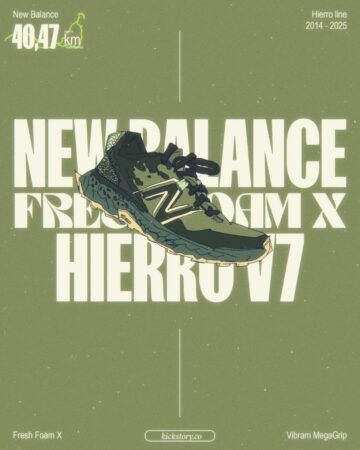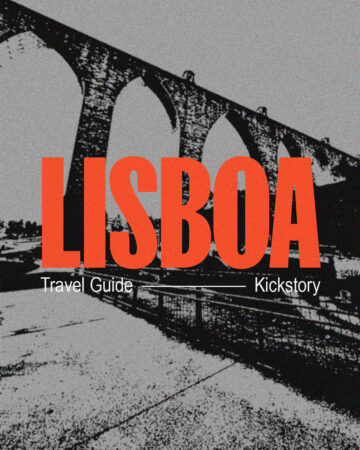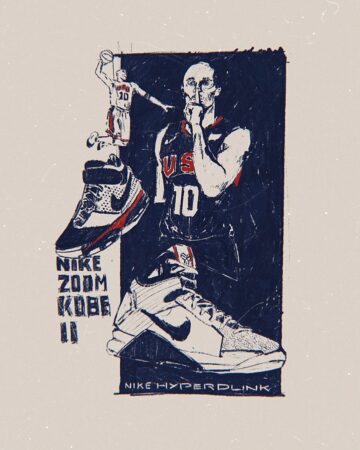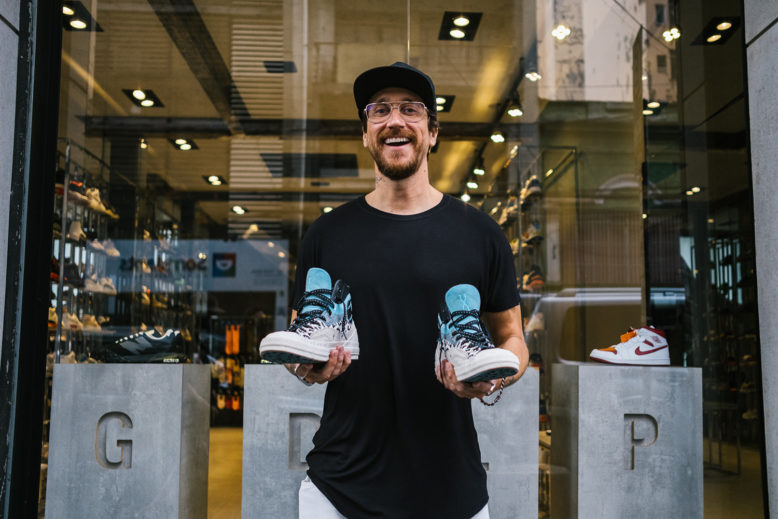
If you’ve enjoyed the Converse collaboration with Guadalupe that sold out in less than a day, be sure to check out our interview with Rod, where you’ll have the opportunity to learn more about this sneaker from the perspective of the person who created it.
For Rod, illustration came early on and is his great passion in life. As a designer, he has already worked at brands such as Alpargatas where he created the famous 2002 World Cup Havaianas. Today he works at Converse as a footwear designer. There, he had the opportunity to create what he referred to as the sneaker of his life – the Guadalupe x Converse Chuck 70 ‘Bom Retiro.’
To celebrate the 10th anniversary of the Guadalupe Store, Converse, in partnership with the store, created a sneaker that not only marks the anniversary of GDLP, but represents the neighborhood of Bom Retiro and all its characteristics and nuances as well.
In a very interesting conversation in front of Guadalupe in Bom Retiro, Rod told us in detail how the inspiration for this project came about and how was the process of creating this unique sneaker.
“My name is Rodrigo, but people know me as Rod. I’m 43 years old, and I love to illustrate…I think drawing is something I was born with. I’ve got an 18-year-old daughter, and she is also an illustrator, a very good one as a matter of fact.”
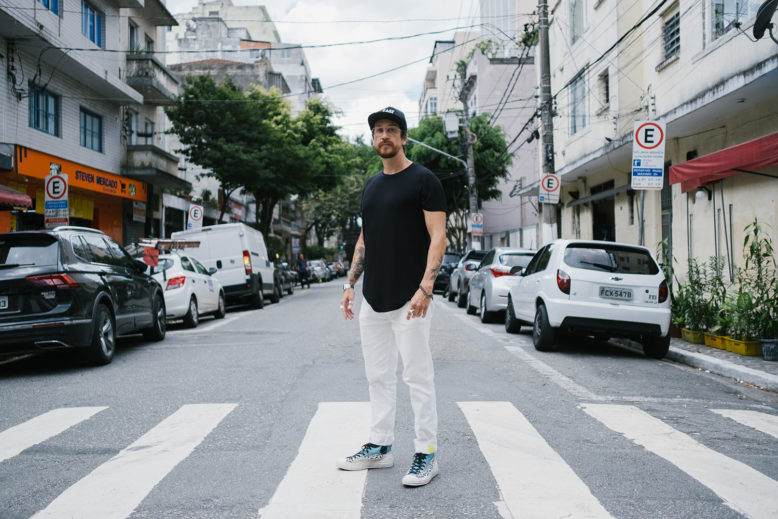
When did you first become interested in drawing, and when did it become an important part of your life?
rod I think illustration was born with me; I’ve always liked it. In school, I used to draw figures, my friends, I drew more than I attended classes. It has always been my essence; it’s in my blood. To this day, drawing is what I like to do the most.
I remember one of my first drawings. I was in preschool, and we were having a presentation for one of those schools’ events. My teacher asked me to draw an outfit related to space and the universe, and I drew a retro-futuristic astronaut with silver shoulder pads. Then she took this drawing, gave it to the mothers from the class, and they sewed their children’s outfits based on my drawing. I didn’t even know what I was doing, but this was my first job related to fashion…which is something I like.
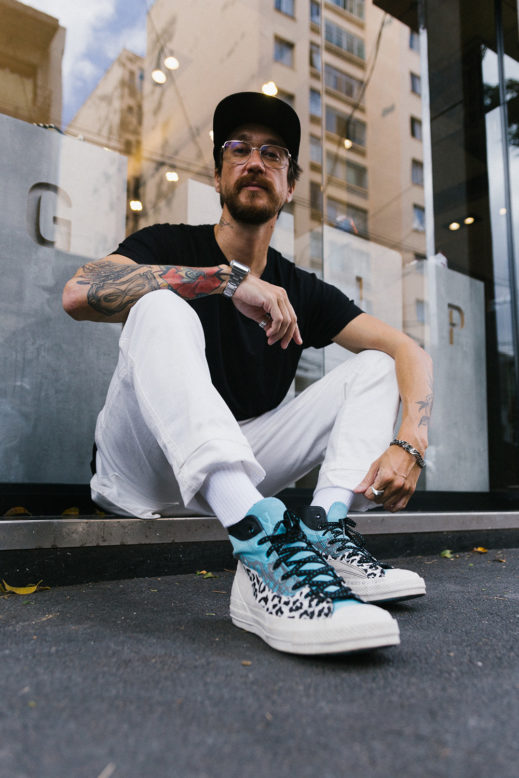
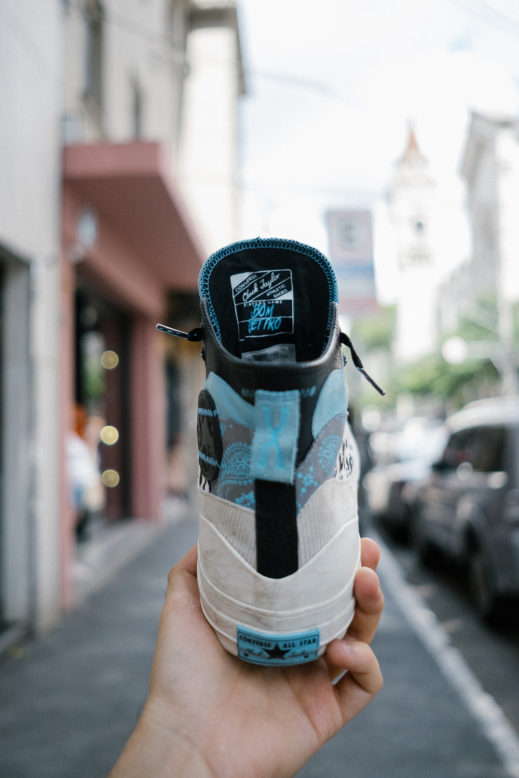
You do digital illustration, and you even have an Instagram account, RöD, dedicated to it. How was the transition from paper to digital for you?
rod I used to draw on paper, but I went digital when I bought the large iPad…it’s much more practical, right? (laughs), I can draw anywhere. I like drawing on digital to pass the time, I like to look for a style, and I think I’m getting there… Anyone who draws is always looking for a unique style.
So, my main hobby is drawing, it’s what I like to do the most… it’s my time to relax, to disconnect from everything; it brings me peace. Even my tattoos, I didn’t do them myself, but I’d bring the drawings to my tattoo artist, and he would do it. I’m actually studying tattooing now; I’m going to buy a machine…I think my drawing style works with the machine’s style.
These latest drawings of mine that I post on Instagram are more playful, with a vibrant color palette, shades of pink, which I like a lot, black; the theme is fantasy, and I mix it with that isometric perspective. This is a world that exists in my head. That’s the cool thing about drawing; you can create things that don’t exist in the real world.
Honestly, I consider myself a better illustrator than a shoe designer (laughs). I still think of using this other talent for something else someday, to make a living out of illustration, I don’t know.
“These latest drawings that I posted on Instagram are more playful, with a vibrant color palette, shades of pink, which I like a lot, black; the theme is fantasy, and I mix it with that isometric perspective. This is a world that exists in my head. That’s the cool thing about drawing; you can create things that don’t exist in the real world.”
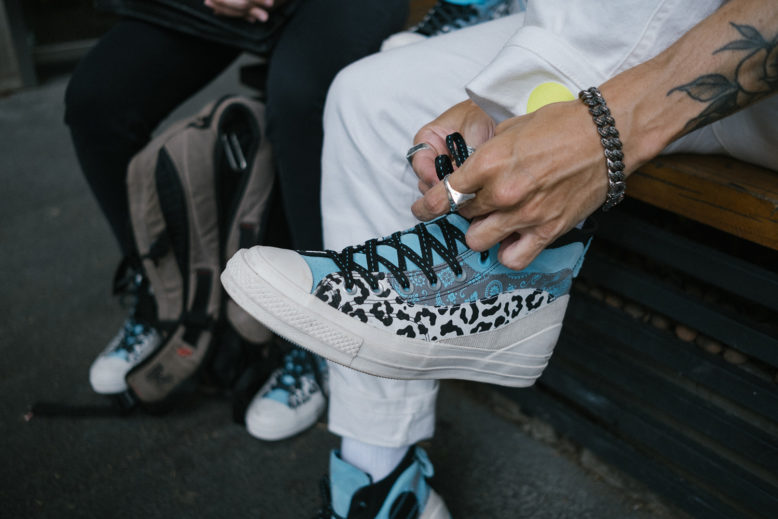
So, coming from illustration, how did you get into footwear design?
rod I majored in industrial design. I had a drawing teacher who loved me because I was the most interested and dedicated in class. I asked him for an internship at an advertising agency. In the beginning, I just packed boxes; I didn’t do much. Then one day, he was out, and they needed a banner for a hospital clinic, so I did it. That’s when I started graphic design…I always knew I wanted to work with something related to design. At the time, I didn’t really understand what design was, but I kept looking at the phone book and analyzing the logos – if I thought the logo was ugly, I’d redo it my way. But I didn’t even know it was an actual profession; I didn’t even know it existed.
After this internship, I joined another agency as a graphic designer. They had the Alpargatas account, and they did the design for Rainha, Mizuno, and Topper. I was always there watching the creation, and one day I proposed some Havaianas designs. The agency had the Alpargatas account, but they didn’t design Havaianas; they only did sneakers. We presented my idea, and the group loved my drawings, and then I created this demand that didn’t exist. That’s how I started in footwear – drawing Havaianas. I did the one for the 2002 World Cup that was my biggest success story within the brand.
“I was always there watching the creation, and one day I proposed some Havaianas designs. The agency had the Alpargatas account, but they didn’t design Havaianas; they only did sneakers. We presented my idea, and the group loved my drawings, and then I created this demand that didn’t exist. That’s how I started in footwear – drawing Havaianas. I did the one for the 2002 World Cup that was my biggest success story within the brand.”


This was such a big hit; it was everywhere! How was the process of making these Havaianas for the World Cup?
rod They wanted to replace the classic “Havaianas Brasil” design, the blue one with the little Brazilian flag on the strap and complement the line with another printed model. I sent them several models, super elaborate prints, and in the middle of them, one done as if it were the back of a team’s jersey – so, on one foot, the No. 1, and on the other one No. 0. When they saw it, the guys went crazy and said, “Wow, we aren’t just doing the Brazilian team; we’re doing all teams!
It was an excellent exercise for me because I also like typography, and for each country, I designed a font for the team’s name and the number – they were all different from each other but following the same concept. It was a big success; I wish I’d earned a 1% royalty; I’d be rich (laughs). In addition to the Havaianas flip-flop, I also designed the product display for the stores, a mini stadium with a cover with the flip-flops inside. We won an award for the display.
It was a very enjoyable time being part of and working at Havaianas – it was very loose; I had a lot of freedom, they would give me themes, and I could play with it however I wanted…I loved it; I’d spend the whole day creating and applying patterns.
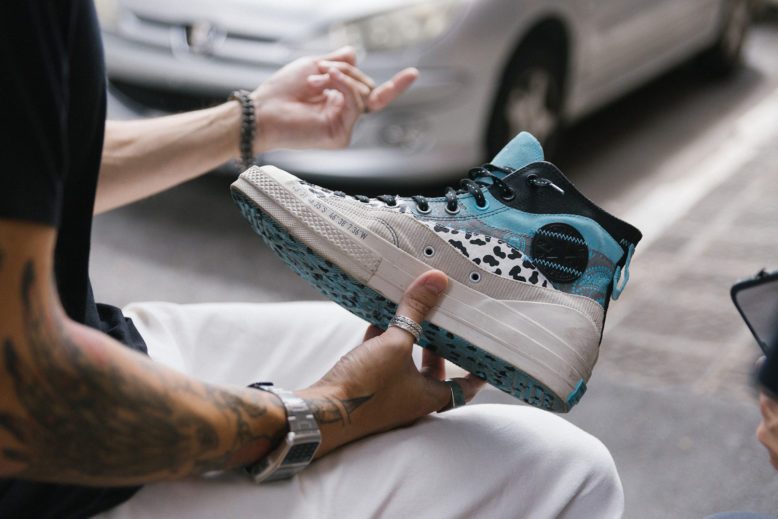
And when did you actually start working with sneakers?
rod Sometime after that, the demand for kids’ shoes increased. So the first sneaker I made was a relaunch of the Kichute kids, a super old soccer boot, all made of rubber, that made your feet stink real bad (laughs). I took the existing Kichute, created a new version for this kid’s model, and added a different sole.
They wanted to rebrand brands like Kichute, Conga, and Bamba – which at the time were the sneakers available in Brazil. We also had Converse, but it was already in a higher price range. So I did some Rainha stuff later and also some Topper runners. This was all in an agency in São José dos Campos.
After Alpargatas I went to Centauro, and there I joined as a graphic and footwear designer. As a graphic designer, I did packaging, prints for apparel, and point-of-sale materials. As a footwear designer, I developed their private brand. Since the supplier was from Asia, at Centauro I learned a lot about the process of designing a sneaker, what material I could use, etc. Well, some time passed, and I received an invitation to work at Converse – I’ve been there since 2015; it will be 7 years this year.
I went into the shoe world and never looked back. Life put me here. I was already addicted to sneakers when I was a kid because of skateboarding. I’ve always liked having sneakers, keeping them, and taking care of them as much as possible so they would last as long as possible because I couldn’t afford to buy them all the time. But then I never stopped.
“I went into the shoe world and never looked back. Life put me here. I was already addicted to sneakers when I was a kid because of skateboarding. I’ve always liked having sneakers, keeping them, and taking care of them as much as possible so they would last as long as possible because I couldn’t afford to buy them all the time.”
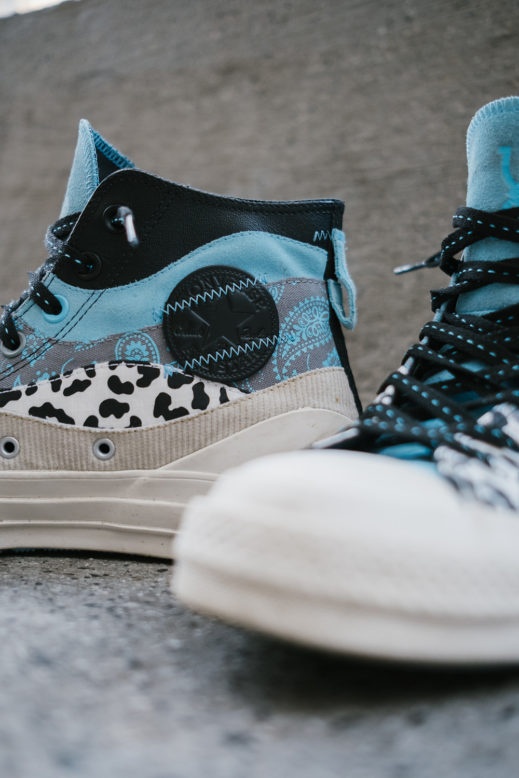

And at Converse, what were your first projects?
rod Our collection is very much based on the global collection, so most of the time, we just make adaptations for the market here – we take the global model and make it viable to be manufactured here in Brazil, choosing other materials. Besides that, we also do what we call “reverse color palette” because when the winter collection is launched, for example, it’s summer here in Brazil, so we have to adapt the colors. In the beginning, we didn’t have much creation.
We had a demand for a skate model that was cheaper than the All Star. So the first Converse model that I fully designed was the Flip Star, a vulcanized shoe with just a few pieces and a little chevron star on the side. It’s kind of like the Converse Louie Lopez. The Flip Star was targeted at people who wanted to have a skate shoe with a more affordable price than a Louie Lopez. Nevertheless, it’s all reinforced; it’s a performance sneaker for skateboarding.
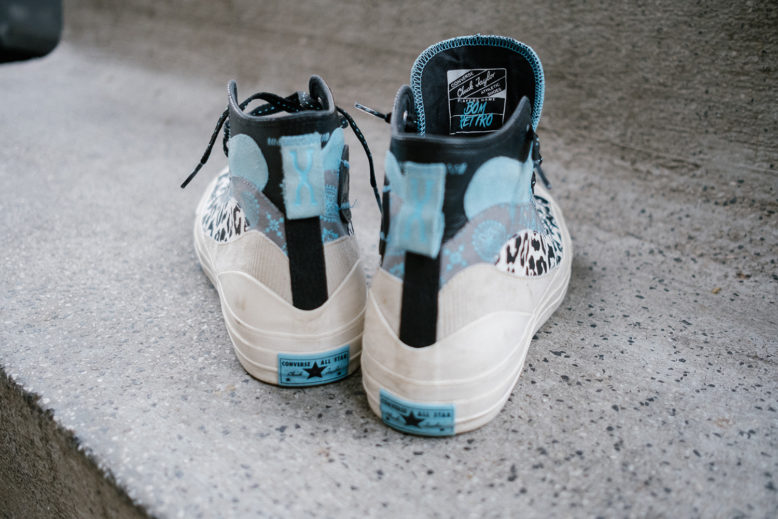

And out of all the sneakers you've ever created, why did you choose the Guadalupe x Converse Chuck 70 'Bom Retiro' for your Kickstory interview?
rod I think that what Guadalupe brought to the sneaker scene was very important. When I found out that I was going to design the sneaker for the store’s 10th anniversary, I was really excited; I thought, “man, this is going to be the sneaker of my life.” The store also brought a different approach to the neighborhood, you know? Two, the founder and owner of the store, says that when he opened the store, people said, “Hey, why are you opening in Bom Retiro? You have to open in Vila Madalena, in Pinheiros”. And he said, “no, man, it will be in Bom Retiro.” And look at this store now, look at everything they built.
In the briefing meeting, I remember they said they wanted to celebrate the store’s 10th anniversary and celebrate the Bom Retiro neighborhood, the immigrants, and the clothing manufacturers that are here. You can find some fabric patches on the street – so they wanted to bring this story to the sneaker. At the meeting, there were me, Ilan and Pedro. By the time the meeting was over, I had a sketch ready. The meeting ended, my working hours were over, but I continued and thought, ” I’m going to create this model right now.” I started assembling the technical sheet, thinking about the materials, I stayed until 2am, but I finished. I sent the draft to Ilan the next day and said, “I’ve got the sneaker ready right here.” He said, “I can’t believe it, our meeting was yesterday, at 6 pm. How is it done already? And just as I drew it the first time, Guadalupe approved it. I showed it to Ilan, and he wanted to change some things, and I said, “Ilan, not this one, this one is mine, don’t mess with it. I conceived it, the inspiration came easy, and it will be the way I conceived it”. He answered, “Great, then just do different colors; we’ll present other color options.” When we showed it to Pedro, he chose the colors from the first sketch I had done.
“By the time the meeting was over, I had a sketch ready. The meeting ended, my working hours were over, but I continued and thought, ” I’m going to create this model right now.” I started assembling the technical sheet, thinking about the materials, I stayed until 2am, but I finished. I sent the draft to Ilan the next day and said, “I’ve got the sneaker ready right here.” He said, “I can’t believe it, our meeting was yesterday, at 6 pm. How is it done already? And just as I drew it the first time, Guadalupe approved it.”

The blue pattern refers to the mantle of Our Lady of Guadalupe, who Twothousand is a devotee of, and also bears the store’s name. The sneaker is full of references. The “X,” which is the number 10 in Roman numerals, the bandana print used by the Chicanos. I added the animal print to represent what Guadalupe brought to the scene: fashion to sneakers. And for the final touch, I put the store’s geolocation on the inside of the sneaker, which was an unusual place. It has a bit of this heel counter from ERX, and I added the corduroy. These layers together refer to the fabric patches, which is what we see in the neighborhood here in Bom Retiro.
And some references are from my head. I did one shoelace blue and the other black with a dotted line referencing the neighborhood streets. But this is the kind of reference that only the designer will get, you know? Nobody else will.
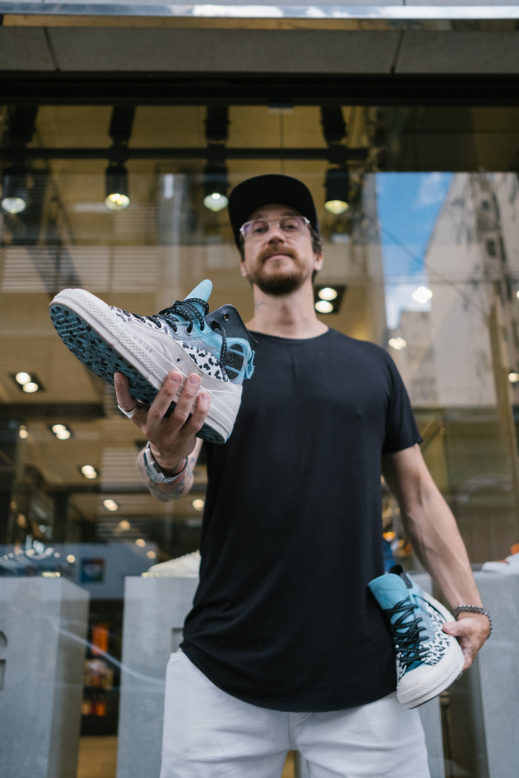
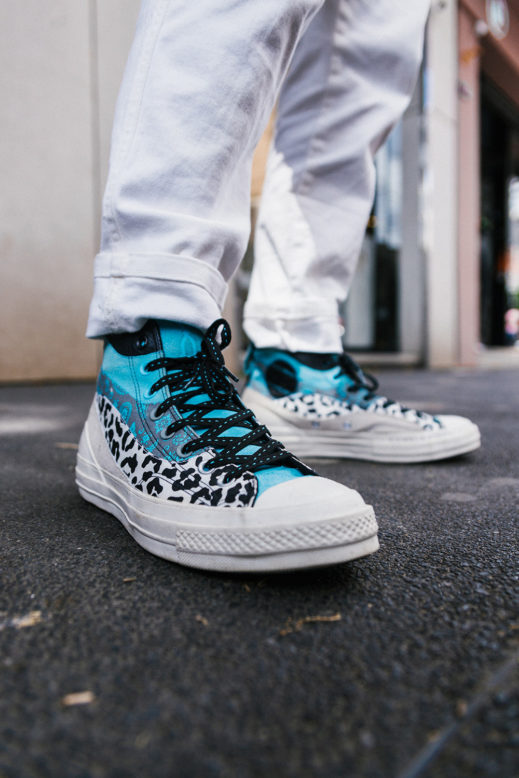
Clearly, every detail and every decision was made for a reason.
rod I designed this tiny font too, for Bom Retiro. And the sole has these rubber sprinkles mixed with blue to match the animal print. We’ve never done this process before here in Brazil. I think it represented well. People liked it; it was displayed there in the restaurant. I think it brought visibility to Converse and a lot of visibility to Guadalupe. This is my favorite son. The coolest thing is that this sneaker was a success, we launched it, and it sold out the same day. There were 200 or 300 pairs, I don’t remember, but they ran out on the same day. Luckily, I managed to buy mine and then Pedro gave me another one.
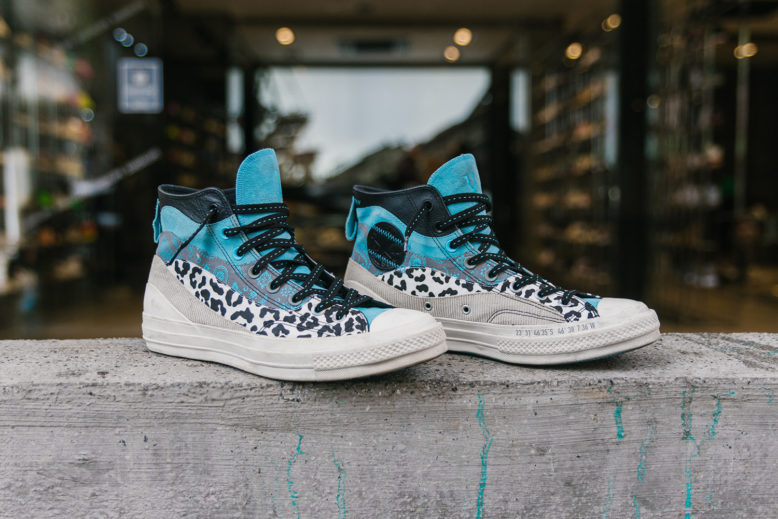
And for a project like this, how long does it take from briefing to manufacturing, to the final product?
rod In Converse’s case, they give us a global guideline. Then the product manager, who is Ilan, makes a compilation of the sneakers that are commercially viable here in Brazil. He puts together a briefing and gives it to us. Today there are two designers – me and Maurício, who makes the women’s collections. Until the sneakers arrive at the store, this whole process takes a year and two months.
It’s a long process. We send the design and the technical sheet, and the factory returns to us with the physical sample. We approve it, make some changes, change the colors. Sometimes there is a material that is too expensive. Then we have to get a cheaper one. Sometimes our hearts break because the sneaker is not the same as you envisioned… but it’s part of the product development process. We send the changes to the factory, and then they send the physical sample back for approval. There are two rounds of samples. If everything is ok, the sneaker goes into the production line.

The Chuck Taylor is one of the most iconic and eclectic silhouettes, although it originated in basketball. It’s been adopted by various groups and musical styles, artists, and subcultures. Converse is timeless; it’s present everywhere. What is your connection to the brand?
rod Converse was born in basketball. In fact, the first technology in a basketball shoe was the logo patch. I don’t know if you know what it’s for, but in the beginning, the logo patch was made of leather so that you wouldn’t bump your foot bones against each other, which is why it’s on the medial side of the sneaker. To this day, people call Customer Service, saying, “my logo is on the wrong side” (laughs). And that’s why the Chuck Taylor is the only sneaker that you photograph the medial side.
In the ’80s, Converse was embraced by rock music – by bands like Nirvana and Ramones. Some time ago, it migrated to fashion… today it has some basketball models, but it’s not its main focus. For me, Converse’s strength is lifestyle. The connection with young people and with the communities. It’s a brand that listens to the people. It wants to know what they have to say. So much so that Converse does several actions with influencers that are not super famous.
I relate a lot to the brand because of my lifestyle, interest in fashion, music, and art, and I think Converse can take all these tribes and talk to them simultaneously. There isn’t a movie you see that doesn’t have a person wearing Converse. It’s a silhouette that everybody knows. It’s not going to advertise the shoe. It’s so iconic that it’s no longer a brand. It’s chic, it’s pop, even worn out. The more worn out, the better.
“I relate a lot to the brand because of my lifestyle, interest in fashion, music, and art, and I think Converse can take all these tribes and talk to them simultaneously. There isn’t a movie you see that doesn’t have a person wearing Converse.”
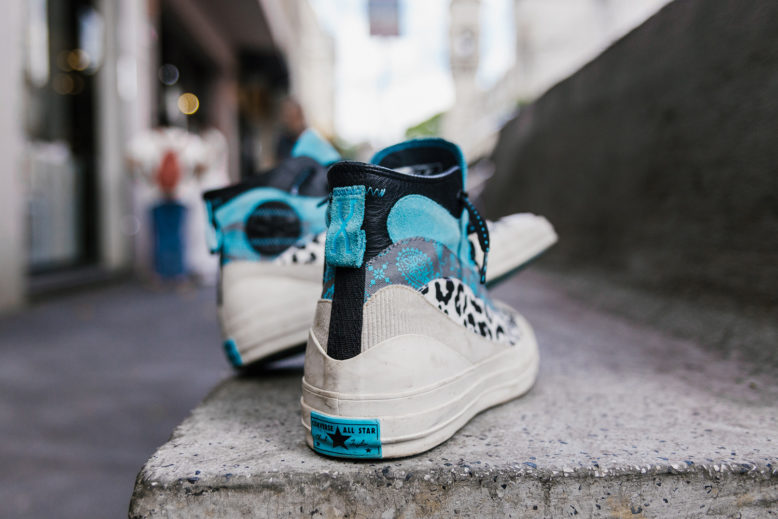
Do you remember when your passion for sneakers began? When was that moment when you saw a pair and had that special "click"?
rod I’m kind of self-taught in my studies, especially sneaker-wise. The first contact I had with sneakers was in the late 80s when skateboarding was very marginalized. As a teenager, I had friends whose parents traveled abroad and brought back some cool sneakers like the Nike Air Flight boot and the Pony; they were sneakers that I’d look at and get enchanted by. But at the time, I couldn’t afford them, so the closest I got to them was a Le Cheval, which was a replica of the Le Coq Sportif sneakers. Even though it wasn’t the original, made of synthetic leather, it was already making me happy because it had that boot-like shape like the others.
At that same time, I had a friend who had more money. Once I went to his house, there was a Nike Air Span II in the trash! It was good, but it had worn soles. So I said, “man, can I have this sneaker?” and he said, ” take it. “I took it to a shoemaker, replaced the sole with a generic one, got some fabric paint, and customized it. Man, this was in 1991; I didn’t even know what I was doing. I didn’t even know that this world of sneakers existed. This was my first Nike – used, refurbished, and customized – and after that, I still wore it for, I don’t know, 4 or 5 years. And that was the beginning of my relationship with sneakers.

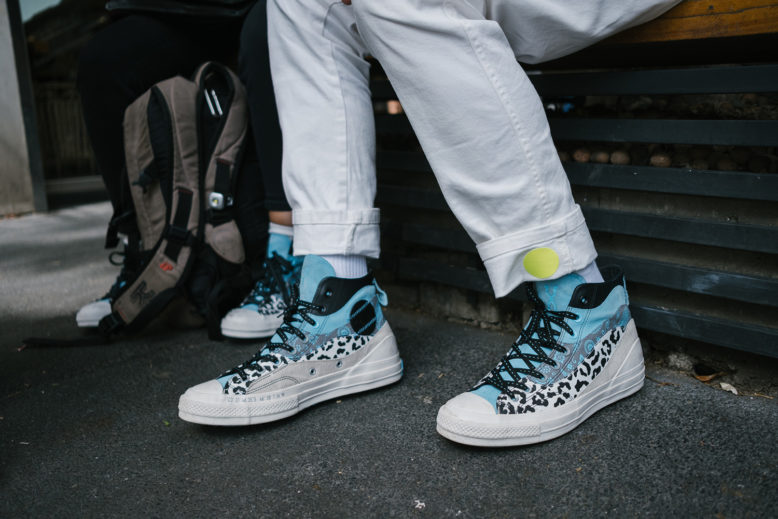
And as someone who designs sneakers and experiences them for a living, which designers do you admire and inspire you?
rod I really like the Air Jordan 1 and 3. I’m kind of old school when it comes to design. I prefer the older ones. Tinker Hatfield, for example, I admire him for making such classic silhouettes that have lasted for so long. To this day, Nike makes and remakes shoes based on classic silhouettes. Besides him, I really like Yohji Yamamoto, who, for me, is a visionary guy; he creates sneakers that we would never think of.
I also support the locals. I’ve got two friends, one who worked with me at Converse, Jonathan. He’s now the director at adidas in Jakarta. I learned a lot from him in terms of production, what can and cannot be done, the chemical composition of materials, he taught me all. And I also have another designer friend, Rafael Sino. He used to work at New Era here in Brazil, and today he’s at adidas in Nuremberg, Germany. I think he’s a fantastic designer. Sometimes we just look at people from the outside, famous people, but these two friends of mine are my idols. When Rafael left, I cried.
And there’s Öus, which in my opinion, is one of the best and most fucking awesome brands in Brazil…who knows, maybe one day I’ll work there too.
Guadalupe x Converse Chuck 70 ‘Bom Retiro’
Owner: Rod Vinhas
Year: 2021
Photos by: Vinicius Martin
